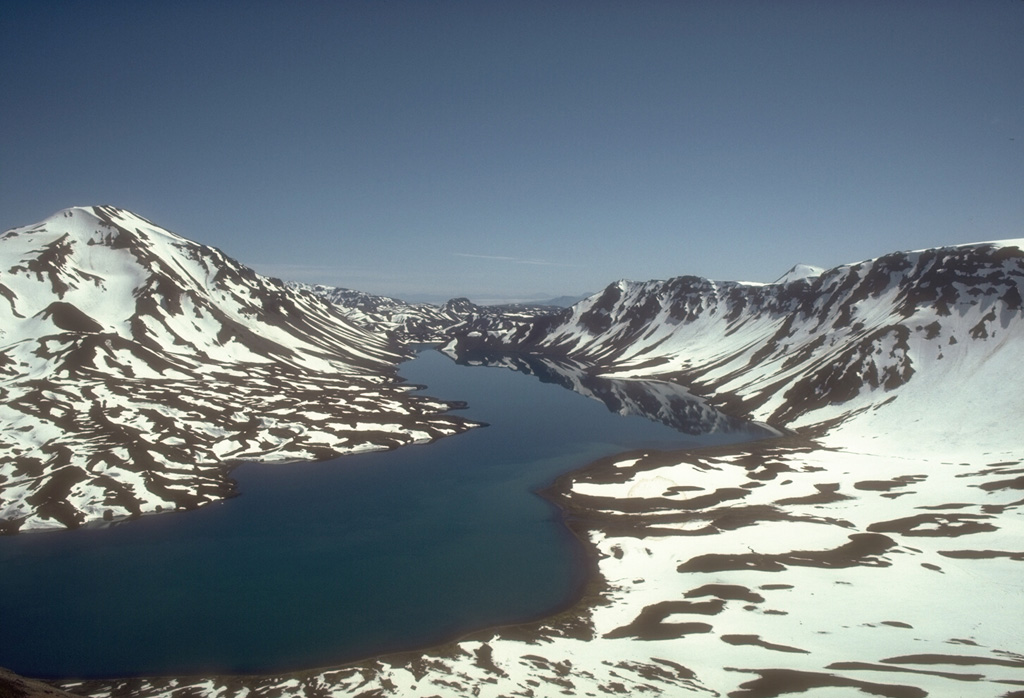Image GVP-05366

Emmons Lake is a 11 x 18 km caldera and is one of the largest calderas in the Aleutian arc. The caldera formed during two large Quaternary eruptions that produced welded tuffs extending to both the Bering Sea and Pacific Ocean. This 1988 view from the SW shows Emmons Lake, the southern caldera wall (right), and Mount Emmons, a post-caldera volcano (left). The post-caldera Mount Emmons, Double Crater, and Mount Hague cones are oriented along the same NE trend as the elongate caldera.
Photo by Tom Miller, 1988 (Alaska Volcano Observatory, U.S. Geological Survey).
![]() This image is made available as a Public Domain Work, but proper attribution is appreciated.
This image is made available as a Public Domain Work, but proper attribution is appreciated.
Galleries: Calderas
Keywords: caldera | crater lake

Emmons Lake Volcanic Center
